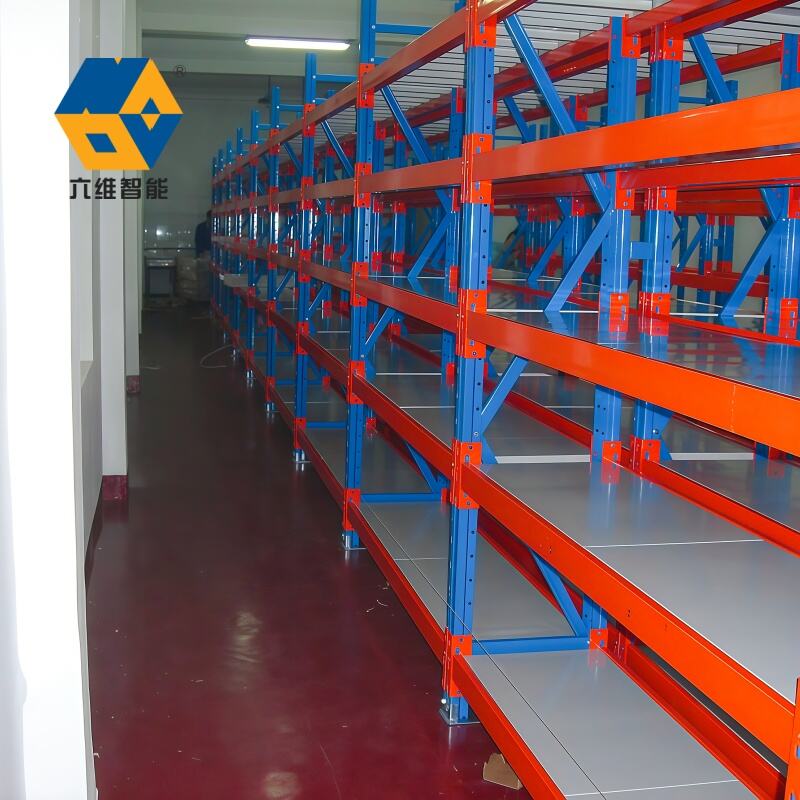Essential Guidelines for Warehouse Racking Safety
Warehouse safety is paramount in today's fast-paced logistics environment, particularly when it comes to heavy duty pallet racks. These essential storage systems bear immense loads and play a crucial role in operational efficiency. However, without proper adherence to safety standards, they can pose significant risks to both personnel and property. Understanding and implementing these standards isn't just about compliance – it's about creating a secure and productive workplace environment.
Modern warehouses rely heavily on heavy duty pallet racks to maximize storage capacity and streamline operations. These robust storage solutions can support thousands of pounds of inventory, but their strength depends entirely on proper installation, maintenance, and adherence to established safety protocols. Let's explore the comprehensive safety standards that ensure these vital storage systems remain secure and efficient.
Structural Requirements and Load Capacity
Material and Design Specifications
Heavy duty pallet racks must be constructed from high-grade steel that meets specific strength requirements. The material composition should withstand both static and dynamic loads while resisting corrosion and wear. Manufacturers must ensure their racks comply with ANSI MH16.1 specifications, which outline the minimum design criteria for industrial steel storage racks.
The design must incorporate appropriate safety factors, including proper beam-to-column connections, adequate cross-bracing, and reinforced base plates. These elements work together to create a stable structure capable of handling designated load capacities while maintaining structural integrity under various warehouse conditions.
Load Capacity Calculations
Every heavy duty pallet rack system must have clearly marked load capacity ratings. These calculations take into account several factors, including the weight of stored materials, impact forces from loading and unloading, and potential seismic activity. Engineers must consider both the individual beam capacity and the overall frame capacity when determining safe working loads.
Regular weight distribution assessments ensure that loads remain within specified limits. This includes monitoring both the maximum weight per pallet position and the cumulative weight on each rack section. Overloading can lead to serious structural failures, making strict adherence to capacity limits essential for workplace safety.

Installation and Assembly Guidelines
Professional Installation Requirements
The installation of heavy duty pallet racks requires qualified professionals who understand both manufacturer specifications and local building codes. Proper installation begins with a thorough site assessment, ensuring the floor can support the anticipated loads and that there's adequate space for safe operation of material handling equipment.
Installers must follow precise leveling procedures, using shims where necessary to compensate for uneven floors. All components must be properly aligned and secured, with particular attention paid to anchor bolt installation and torque specifications. Regular post-installation inspections help verify that all elements are correctly assembled and functioning as intended.
Anchoring and Stabilization Methods
Secure anchoring is crucial for the stability of heavy duty pallet racks. Floor anchors must meet minimum size and depth requirements based on floor composition and anticipated loads. Base plates should be properly sized and installed with appropriate anchor bolts to prevent movement or tipping.
Additional stabilization measures may include row spacers, wall ties, and cross-aisle ties, depending on the configuration and height of the racking system. These components help create a more rigid structure that can better resist lateral forces and maintain stability under dynamic loads.
Inspection and Maintenance Protocols
Regular Inspection Requirements
Systematic inspection programs are essential for maintaining the safety of heavy duty pallet racks. Daily visual checks by operators should look for obvious damage or misalignment. Weekly documented inspections should examine key components more thoroughly, including beams, frames, connections, and floor anchors.
Quarterly comprehensive inspections performed by qualified personnel should assess the entire racking system, including load application, structural integrity, and safety device functionality. These inspections must be documented and records maintained for compliance purposes.
Damage Assessment and Repair Procedures
When damage is identified, immediate action is required to assess the severity and implement appropriate repairs. A classification system helps categorize damage levels, from minor cosmetic issues to serious structural concerns requiring immediate unloading and repair.
Only authorized personnel should perform repairs using manufacturer-approved components and methods. Temporary fixes or makeshift repairs are never acceptable for heavy duty pallet racks. All repairs must be documented and the repaired sections re-inspected before returning to service.
Safety Features and Protective Equipment
Impact Protection Systems
Column protectors, end-of-row guards, and bollards are essential safety features that protect heavy duty pallet racks from forklift impacts. These protective devices should be properly sized and installed according to manufacturer specifications and traffic patterns within the warehouse.
Guard rails and safety barriers create designated travel lanes and help prevent accidental collisions with racking systems. Regular inspection and maintenance of these protective features ensure they remain effective in preventing damage to the racking structure.
Safety Signage and Markings
Clear and visible load capacity signs must be posted on all heavy duty pallet racks. Floor markings should indicate proper pallet placement and forklift operating areas. Safety warnings and operational instructions should be prominently displayed in appropriate locations.
Color-coding systems can help identify different zones and rack configurations, improving operational efficiency while maintaining safety standards. All signage should be regularly reviewed and updated to ensure accuracy and visibility.
Frequently Asked Questions
How often should heavy duty pallet racks be professionally inspected?
Professional inspections should be conducted at least annually, with more frequent inspections recommended for high-traffic or heavy-use environments. Additionally, daily visual checks and weekly documented inspections should be performed by trained facility personnel.
What are the signs that a pallet rack needs immediate repair or replacement?
Critical signs include visible bent or damaged components, cracked welds, displaced or loose connectors, significant rust or corrosion, and any noticeable lean or misalignment in the structure. If these issues are observed, the affected area should be immediately unloaded and assessed by a qualified professional.
Can heavy duty pallet racks be modified after installation?
Modifications to heavy duty pallet racks should only be performed under the guidance of a qualified engineer and in accordance with manufacturer specifications. Any changes must be properly documented and may require recalculation of load capacities and new safety inspections.

